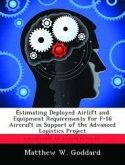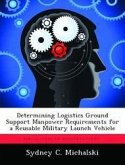This thesis discusses the appropriateness of the Defense Logistics Agency's (DLA) requirements model in managing consumable support for Air Force specific items. Currently, DLA uses a lot sizing technique referred to as the classic Economic Order Quantity, (EOQ) model. One of the key assumptions of this model is that demand is constant and continuous. Yet with Air Force bases using a lot sizing technique to place their demands for consumable items to DLA, it is apparent that the demand pattern that DLA faces, at least for Air Force specific items, is not constant and continuous. This study looks at the impact of violations of the constant and continuous demand assumption on DLA's ability to support its customers. The findings of this study highlight the fact that the EOQ model does not perform well under the lumpy demand patterns that DLA faces. In addition, the Silver-Meal algorithm was used as a comparison to see if other inventory models could better handle this lumpy demand pattern. The Silver-Meal model required less inventory on hand and at a lower total variable cost than the EOQ model DLA is currently using.








